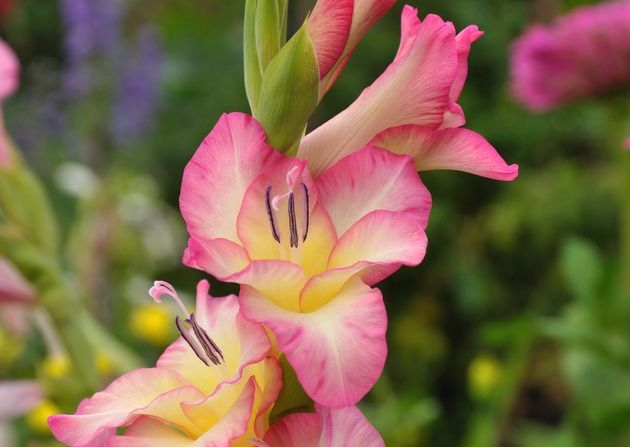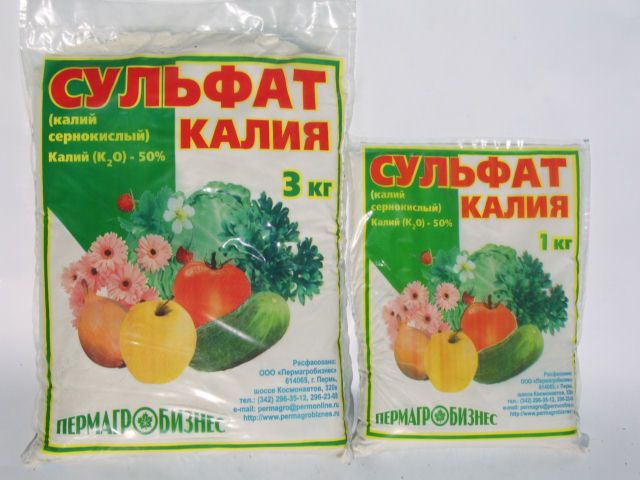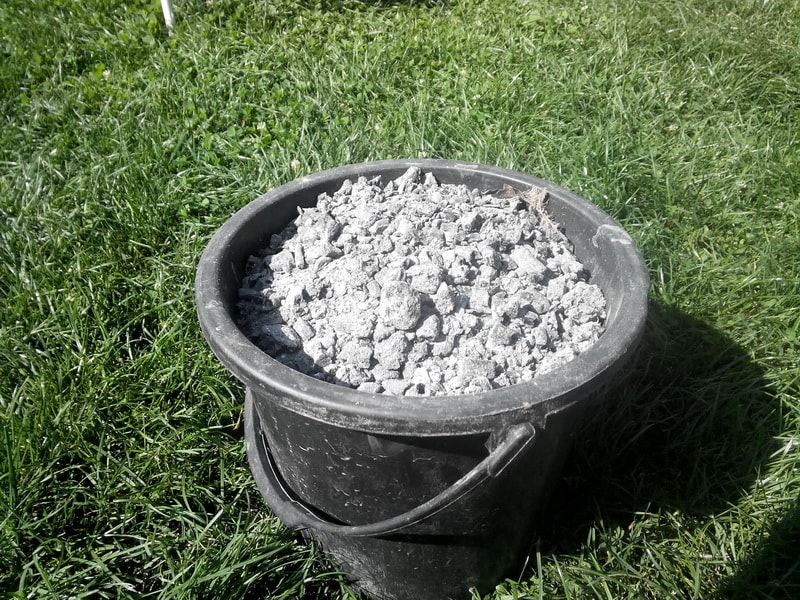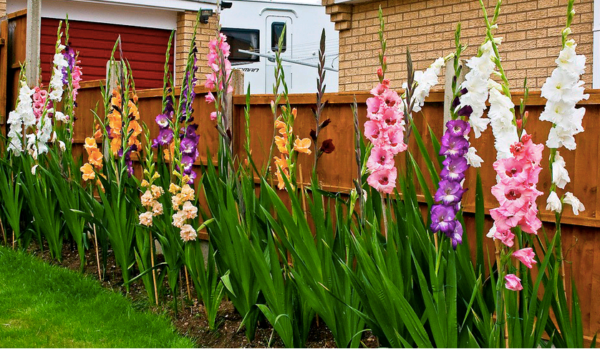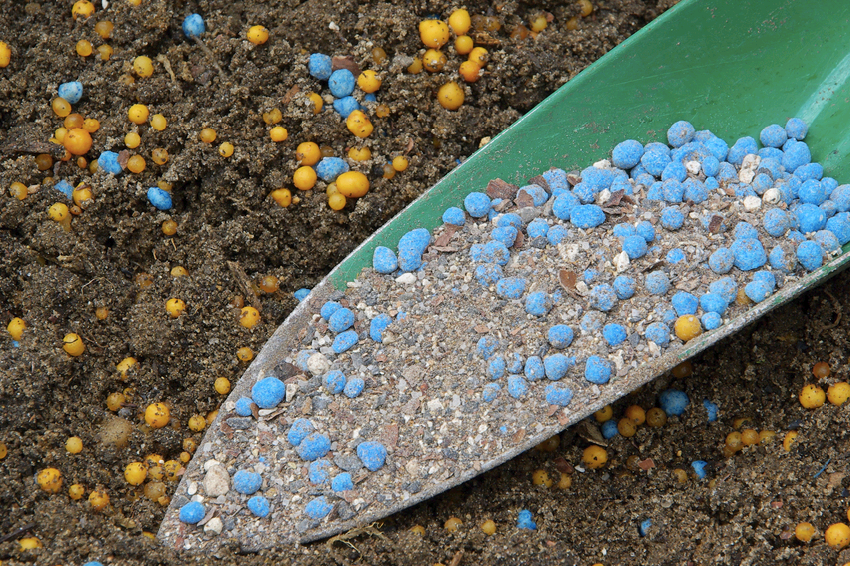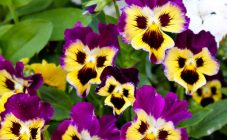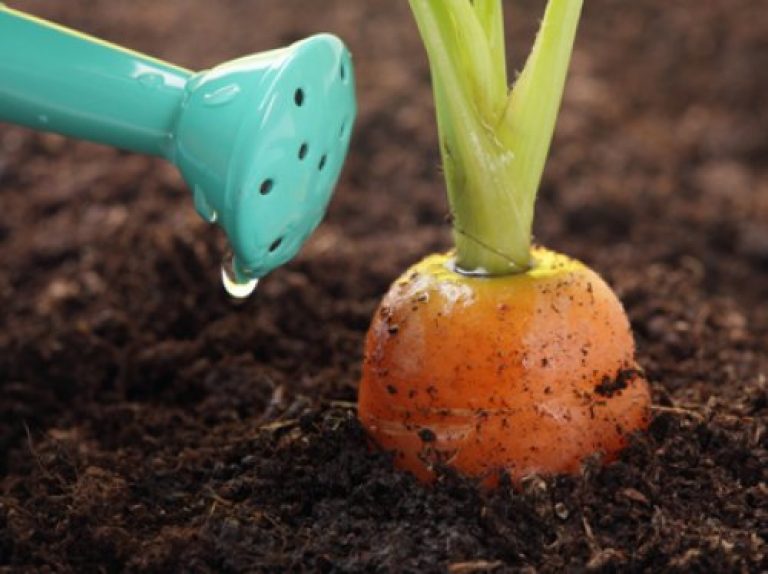Content:
Almost all bulbous and root-tuber crops are not capricious and grow, one might say, by themselves. The same cannot be said about gladioli - one of the most beautiful flowers of the Iris family. Their calling card is chic, graceful, long inflorescences. Gladioli require tireless and painstaking care. But all efforts are necessarily compensated, especially if you figure out in advance how to feed the gladioli. The result is a great bloom!
Gladioli: feeding and care in the open field
To achieve the beauty and presentability of the gladiolus flowers in the arrow, as well as to ensure that the stem is even, within 2 months following the planting of flowers, some more effort is needed. And then the result will be fully impressive. To do this, it is worth figuring out how to feed gladioli and how often you need to do it.
After planting, the flower needs watering in a day. This must be done for the normal development of the peduncle. Per sq. meter requires 8-10 liters of water. In conditions of persistent and prolonged drought, gladioli should be watered every evening. In addition, thorough loosening of the soil is necessary so that air can circulate freely at the roots. If the weather is consistently rainy, you can do without watering or irrigate gladioli 2 times a week with well-settled water.
Disease prevention
If the flowers are cultivated in sandy loam soil, foliar feeding can be done: spraying the leaves with a nutrient composition. Preventive treatment is carried out at least three times throughout the growing season of gladioli. For the first time this is done when they are planted, then when an arrow appears and when buds begin to form. Below you can find out how to fertilize gladioli.
Fertilizers required for gladioli
The first phase of growth includes the period when the green mass is growing, during this period it is worth thinking about how to feed gladioli for growth. At this stage, the plant needs phosphorus and nitrogen, because rhizomes are formed along with the stems. It is permissible to use any fertilizers - both mineral and organic.
- Common ash. Such dressing and flowers to the liking, and the soil is subsequently enriched with phosphorus and potassium.
- Bananas are rich in potassium, including their peels. For use as a fertilizer, it is dried in the oven, and then crushed and immediately before planting, this substance is placed in the ground. The peel is decomposed by microorganisms that have settled in the soil, as a result of which, potassium becomes more convenient for assimilation.
- Fresh banana peel is poured with water and infused for a week. Plants are watered with this water when buds appear. If a large area is planted with gladioli, a more concentrated potassium-based fertilizer is used, which compensates for the lack of this substance in the soil.
- After the budding period, the flowers should be fertilized with superphosphate only. The action of this mineral fertilizer is long-lasting. It is it that is able to provide the flower with as much phosphorus as it needs at different stages of development, so that the gladiolus can bloom in time for the next year. Phosphorus is not washed out into the lower layers, which means that the remainder will remain in the ground.
Top dressing depending on the season
Spring
When the first 3-4 leaves appear, it's time to make the first feeding. The most used mineral fertilizer for spring feeding is urea. Proportion: matchbox for 10 liters of water. Watered soil should be watered.
From organics, the best option is guano, or slurry. A solution is prepared, regardless of whether from bird droppings or manure, as follows:
- A vessel of any size is 1/3 filled with fertilizer.
- The contents are filled with water and infused for 14 days.
- The solution is diluted with water in a ratio of 1:10.
Fertilizing flowers in the garden is done with ready-made compost during growth. The compost is placed in the ground and then dug up.
Summer
Summer flower feeding (June, July) includes at least five steps. If fertilization is applied frequently, the nutrient balance in the soil will be normal.
There are many options for a wide variety of compositions for feeding gladioli in the summer:
- copper sulfate;
- boric acid;
- potassium permanganate;
- iron-based preparations;
- magnesium.
It is necessary to choose the type of fertilizer for gladioli during the July flowering period, based on the presence of certain nutrients in the soil. But this season they especially need potassium salts. The lush bloom of gladioli guarantees a combination of substances such as potassium, phosphorus and nitrogen. Gladioli should be fed outdoors, given how fertile the soil is.
After flowering, in August, gladioli should be fertilized with potassium and superphosphate. Or you can use double superphosphate. It must be poured with hot water and wait for complete dissolution. It is necessary to dilute in 10 liters of water and water the flowers with a solution. For feeding gladioli in August-September, it is preferable to feed them with potassium sulphide or potassium magnesium.
Fertilization should be stopped in early September.
Knowing how to feed gladioli during the growth and flowering period and how to care for them, you can grow gorgeous plants in the garden that will delight you with a riot of colors.
